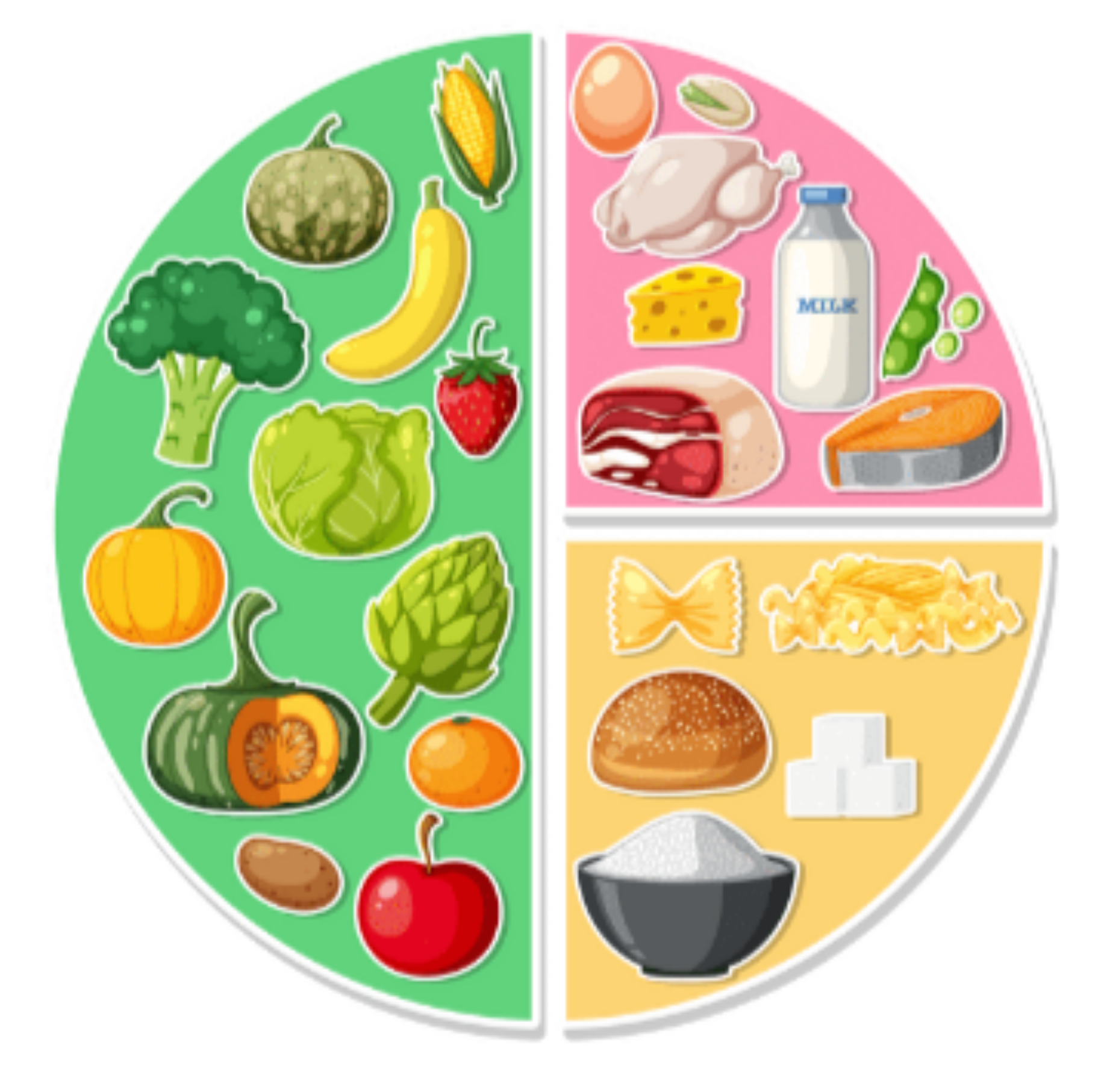Do we really know what a ‘healthy diet’ means? A healthy diet is one that provides each person with the essential nutrients their body needs in a balanced way to meet their nutritional requirements.
Humans require five essential nutrients, classified into 2 groups:
Macronutrients

- Carbohydrates
(rice, pasta, cereals, potatoes, etc.)
- Proteins
(chicken, fish, meats, eggs, etc.)
- Fats
(nuts like walnut, hazelnut, pecan, etc.)
Micronutrients
- Vitamins
(broccoli, oranges, tuna, etc.)
- Minerals
(seeds, legumes, dairy products, etc.)
For the preparation of a healthy diet, it is recommended to consult a nutritionist because a healthy diet must be adaptable to different stages of life, as nutritional needs vary depending on age, gender, level of physical activity, and lifestyle, among other factors.
However, if you do not have the budget to see one, here’s a quick guide on how to distribute your meals and an example of a healthy plate based on your weight in kilograms:
- The recommended amount of protein for a person who does not engage in physical activity is 0.8 grams per kilogram of body weight per day.
- The recommended amount of protein for a person who is physically active or wants to increase muscle mass can vary from 1.2 grams to 2.2 grams per kilogram of body weight per day.
Example calculation: If you weigh 75 kg and are moderately active, you may need between 90 and 165 grams of protein per day (75 kg * 1.2 g = 90 grams) or (75 kg * 2.2 g = 165 grams).
- The recommended amount of carbohydrates a person should consume is around 45-65% of total daily calories, with the specific amount depending on physical activity level.
Example calculation: If you consume 2000 calories per day and aim for 50% carbohydrates, you should consume around 1000 calories from carbohydrates. Since carbohydrates provide approximately 4 calories per gram, that would be about 250 grams of carbohydrates (1000 kcal / 4 kcal per gram).
- When it comes to fats, it’s essential to include both saturated and unsaturated fats, ideally providing around 20-35% of total calories.
Example Calculation: Following the previous example of 2000 daily calories, if 30% comes from fats, that would be approximately 67 grams of fat per day (2000 kcal * 0.30 / 9 kcal per gram).
Example of a Healthy Plate:
- Proteins: Grilled chicken breast: 150 g (approximately) Provides approximately 37.5 g of protein.
- Carbohydrates: White rice: 1 cup cooked (about 180 g) Contains approximately 45 g of carbohydrates.
- Vegetables: Mixed salad: Lettuce, tomato, cucumber, and carrot. Dressed with 1 tablespoon of extra virgin olive oil and balsamic vinegar.
- Healthy Fats: Pecan nuts: 1/4 cup (approximately 30 g) Provides healthy fats, especially omega-3 and omega-6 fatty acids.
Approximate Nutritional Value: Proteins: 37.5 g (from chicken) Carbohydrates: 45 g (from white rice) Fats: Approximately 15 g (from pecan nuts and olive oil in the salad)
Note that this is just one meal. For a balanced diet, nutritional needs should be distributed across multiple meals, ideally 3 to 4 meals, to ensure variety in foods and meet nutritional goals.
Maintaining a healthy diet plays a crucial role in disease prevention, serving as one of our most powerful tools for this purpose. It helps reduce the risk of developing various short-term, medium-term, and long-term diseases associated with inadequate nutrition, such as hypertension, diabetes, obesity, cardiovascular diseases, and even certain types of cancer. Committing to a balanced diet represents the best investment in health that we can make for ourselves.








